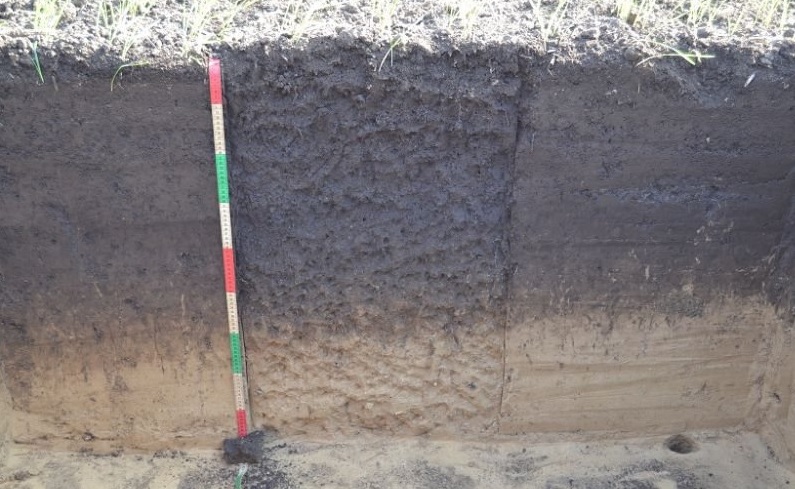
With increasing awareness of problem soils and their impact on arable farm productivity, results from a recent trial provide insights into how soil activators aimed at improving fertility could help turn things around.
A five-year trial carried out in the Czech Republic shows positive results from using a biostimulant soil activator.
It led to less compaction, better humus quantity and quality, reduced fuel consumption, improved yields, and a better return on investment.
The Agricultural Research Institute, Troubsko, Czech Republic, invited Olmix to take part in a field trial in Litobratrice, South Moravia, from 2017 to 2021.
The trial, supported by the Czech Republic Ministry of Agriculture, looked at technologies for soil protection and erosion control.
The area where the trials were hosted is hot and dry – rainfall in 2017 was 380mm and in 2018, 411mm.
Straw is returned to the soil after harvest and the cultivation system is min till. Soil is moderately heavy to heavy clay.
The trial was based on a five-year rotation of spring wheat, winter wheat, oilseed rape, winter wheat and sugar beet, with each treatment area being 36m wide and 850m long to reflect farm conditions.
Treatments included soil activator Neosol, a mineral complex rich in trace elements and derived from seaweed.
It was applied at 150kg/ha in spring 2017 then 120kg/ha in autumn that year and in subsequent years – the last application was made in autumn 2020.
The control was Amofos 16/20 – ammonium phosphate applied at 150kg/ha. During the growing season the plots received 200kg of YaraBela N (nitrogen) 27% + 4% MgO (magnesium), and liquid DAM (diammonium phosphate) 29% - at 2 x 100 litres/ha.
Soil characteristics were measured each year over five years, comparing Neosol with the control.
“In year five, average soil density, which expresses soil compaction, fell by 21.2% to 1.13g/cm3 compared with the control at an average of 1.37g/cm3,” says Olmix Plant Care development manager, Benoit Le Rumeur.
Water infiltration to soil was also much better in the area treated with the soil activator with 22.6mm absorbed in 15 minutes – 64% more than the 13.8mm absorbed by the control.
Humus quantity and quality is also an important parameter of a soil’s fertility, he adds.
“Humus influences structural stability, water retention, micro-organism activity and plant feeding. A high quantity of humus also allows nitrogen fertilisation to be reduced.”
"In the trial, there was faster humus synthesis from organic matter residues in the treated soil. After five years, humus comprises 2.68% of the soil with Neosol compared to 2.09% of the soil in the control plot.
"This means 28% more humus in the same volume of soil. Also, a greater humic/fulvic acid ratio shows a higher quality of humus for this treatment.
"In the trial, humic/fulvic acid ratio for the treated plot was 1.73 compared with a humic/fulvic acid ratio of 1.09 for the control.”
“When microbial activity is healthy, microbes are much more able to transform organic matter into humus,” says Grant James, Olmix territory manager UK and Ireland.
“Humus is a key factor in allowing microbes to feed themselves, and it is also involved in soil stability and its capacity to maintain a balanced pH.”
The trial also looked at fuel cost. It showed that by year five, fuel consumption related to growing the sugar beet crop was 16.6% lower in the treated area, at 131 litres/ha compared with 157 litres/ha for the control area.
“Regular use of the soil activator led to a better soil structure, making it easier to work land, leading to 16.6% lower fuel consumption than the control after five years,” says Mr Le Rumeur.
Using the soil activator also improved yields (see table). “Whatever the climatic conditions, Neosol led to better soil structure and higher yields, allowing crops to meet their genetic potential,” says Mr Le Rumeur.
“These soil structural improvements provide better conditions for plant growth, allowing improved rooting and nutrient take up, as well as water availability.”
The trial showed it was possible to increase the ROI by an average of €162/ha/year (£140.94/ha/year) in five years. ROI was calculated using the price of the goods in the production year.
“This trial shows how in normal farming conditions over large areas it is possible to improve soil quality and productivity in a more sustainable way,” says Mr Le Rumeur.
“It is about doing more with less – less fertiliser and less water. We can increase soil productivity through better soil functioning with a new generation of inputs like Neosol, to provide essential nutrients to soil life and by working with less synthetic fertiliser.”
